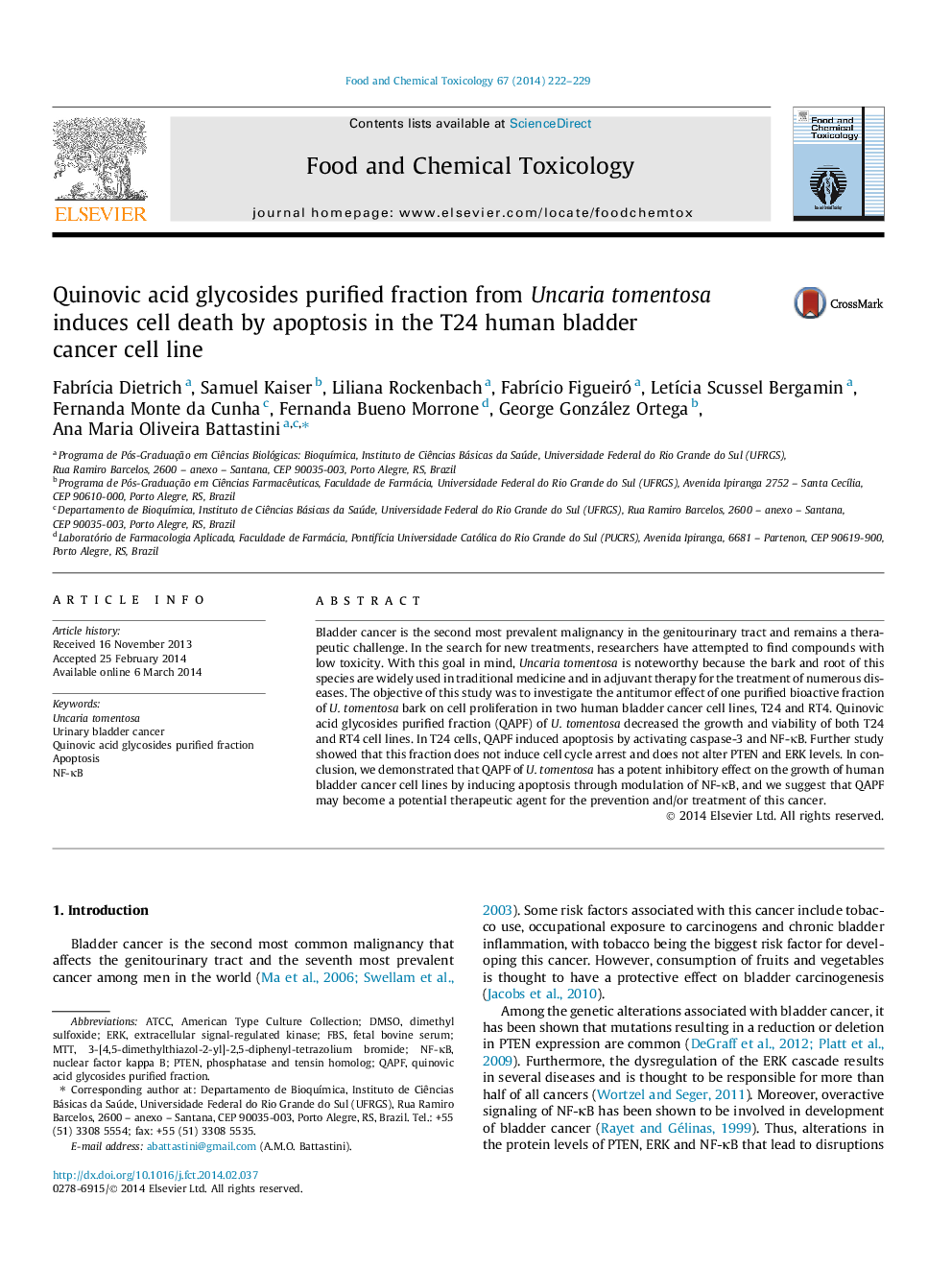| Article ID | Journal | Published Year | Pages | File Type |
|---|---|---|---|---|
| 5850597 | Food and Chemical Toxicology | 2014 | 8 Pages |
â¢Cytotoxic activity of the QAPF of Uncaria tomentosa was investigated.â¢QAPF exhibited a potent inhibitory effect on cell growth of T24 and RT4 cell lines.â¢QAPF induced apoptosis by activating caspase-3 and NF-κB pathways.â¢QAPF may be promising for the prevention and/or treatment of bladder cancer.
Bladder cancer is the second most prevalent malignancy in the genitourinary tract and remains a therapeutic challenge. In the search for new treatments, researchers have attempted to find compounds with low toxicity. With this goal in mind, Uncaria tomentosa is noteworthy because the bark and root of this species are widely used in traditional medicine and in adjuvant therapy for the treatment of numerous diseases. The objective of this study was to investigate the antitumor effect of one purified bioactive fraction of U. tomentosa bark on cell proliferation in two human bladder cancer cell lines, T24 and RT4. Quinovic acid glycosides purified fraction (QAPF) of U. tomentosa decreased the growth and viability of both T24 and RT4 cell lines. In T24 cells, QAPF induced apoptosis by activating caspase-3 and NF-κB. Further study showed that this fraction does not induce cell cycle arrest and does not alter PTEN and ERK levels. In conclusion, we demonstrated that QAPF of U. tomentosa has a potent inhibitory effect on the growth of human bladder cancer cell lines by inducing apoptosis through modulation of NF-κB, and we suggest that QAPF may become a potential therapeutic agent for the prevention and/or treatment of this cancer.
Graphical abstractDownload full-size image
